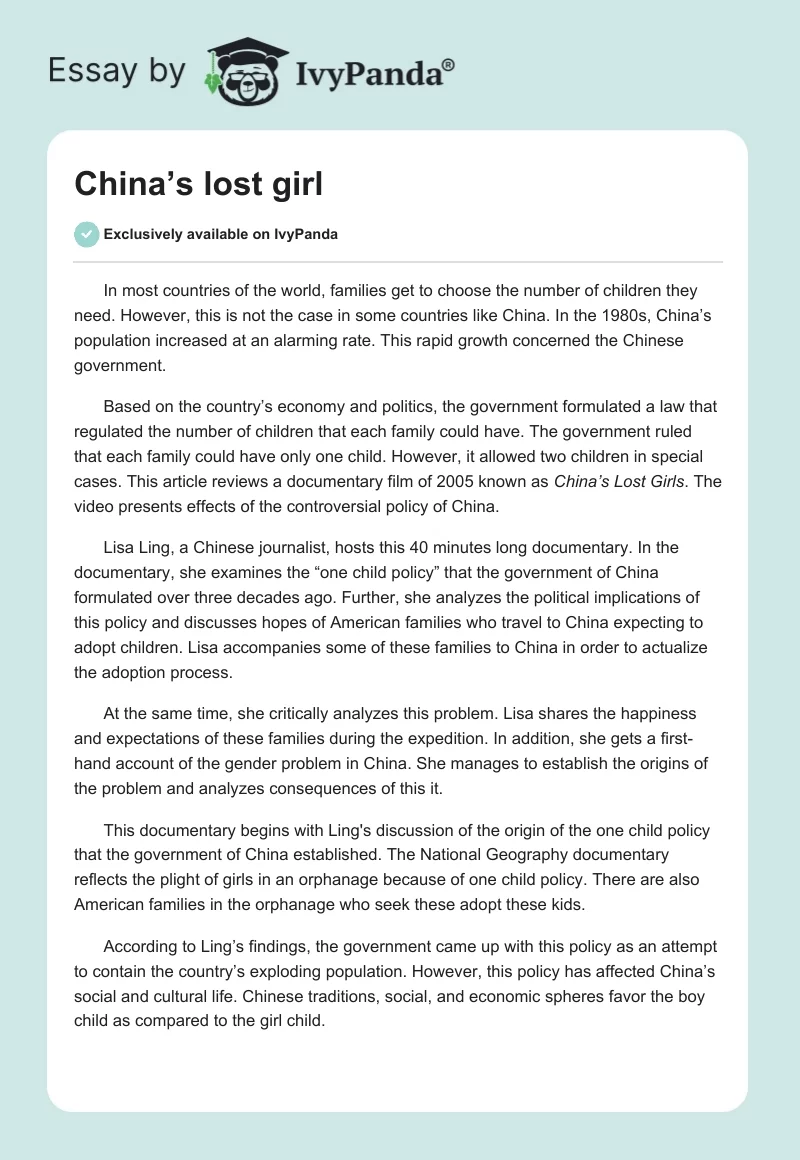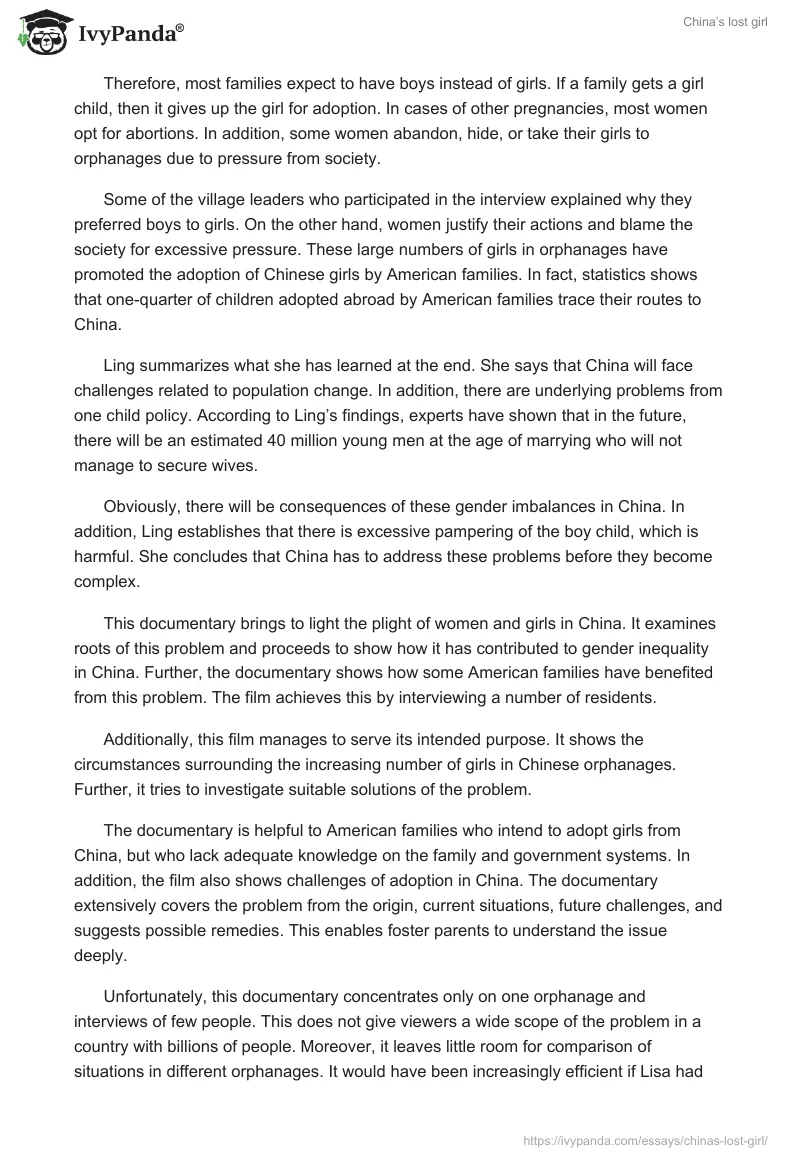In most countries of the world, families get to choose the number of children they need. However, this is not the case in some countries like China. In the 1980s, China’s population increased at an alarming rate. This rapid growth concerned the Chinese government.
Based on the country’s economy and politics, the government formulated a law that regulated the number of children that each family could have. The government ruled that each family could have only one child. However, it allowed two children in special cases. This article reviews a documentary film of 2005 known as China’s Lost Girls. The video presents effects of the controversial policy of China.
Lisa Ling, a Chinese journalist, hosts this 40 minutes long documentary. In the documentary, she examines the “one child policy” that the government of China formulated over three decades ago. Further, she analyzes the political implications of this policy and discusses hopes of American families who travel to China expecting to adopt children. Lisa accompanies some of these families to China in order to actualize the adoption process.
At the same time, she critically analyzes this problem. Lisa shares the happiness and expectations of these families during the expedition. In addition, she gets a first-hand account of the gender problem in China. She manages to establish the origins of the problem and analyzes consequences of this it.
This documentary begins with Ling’s discussion of the origin of the one child policy that the government of China established. The National Geography documentary reflects the plight of girls in an orphanage because of one child policy. There are also American families in the orphanage who seek these adopt these kids.
According to Ling’s findings, the government came up with this policy as an attempt to contain the country’s exploding population. However, this policy has affected China’s social and cultural life. Chinese traditions, social, and economic spheres favor the boy child as compared to the girl child.
Therefore, most families expect to have boys instead of girls. If a family gets a girl child, then it gives up the girl for adoption. In cases of other pregnancies, most women opt for abortions. In addition, some women abandon, hide, or take their girls to orphanages due to pressure from society.
Some of the village leaders who participated in the interview explained why they preferred boys to girls. On the other hand, women justify their actions and blame the society for excessive pressure. These large numbers of girls in orphanages have promoted the adoption of Chinese girls by American families. In fact, statistics shows that one-quarter of children adopted abroad by American families trace their routes to China.
Ling summarizes what she has learned at the end. She says that China will face challenges related to population change. In addition, there are underlying problems from one child policy. According to Ling’s findings, experts have shown that in the future, there will be an estimated 40 million young men at the age of marrying who will not manage to secure wives.
Obviously, there will be consequences of these gender imbalances in China. In addition, Ling establishes that there is excessive pampering of the boy child, which is harmful. She concludes that China has to address these problems before they become complex.
This documentary brings to light the plight of women and girls in China. It examines roots of this problem and proceeds to show how it has contributed to gender inequality in China. Further, the documentary shows how some American families have benefited from this problem. The film achieves this by interviewing a number of residents.
Additionally, this film manages to serve its intended purpose. It shows the circumstances surrounding the increasing number of girls in Chinese orphanages. Further, it tries to investigate suitable solutions of the problem.
The documentary is helpful to American families who intend to adopt girls from China, but who lack adequate knowledge on the family and government systems. In addition, the film also shows challenges of adoption in China. The documentary extensively covers the problem from the origin, current situations, future challenges, and suggests possible remedies. This enables foster parents to understand the issue deeply.
Unfortunately, this documentary concentrates only on one orphanage and interviews of few people. This does not give viewers a wide scope of the problem in a country with billions of people. Moreover, it leaves little room for comparison of situations in different orphanages. It would have been increasingly efficient if Lisa had interviewed many people and came up with suggestions that were concrete and applicable to China’s policy on the number of children.
In conclusion, it is fair to state that the documentary is effective. It exposes the problems that China faces due to the implementation of the one child policy. Further, the documentary provides adequate information to people who have limited knowledge on China’s systems and policies.
In addition, it analyzes emerging challenges from the continuous implementation of the policy. The film provides suggestions on how Chinese government can counter these challenges. The documentary triggers the intended reaction in viewers and seeks to offer possible solution to the problem.


